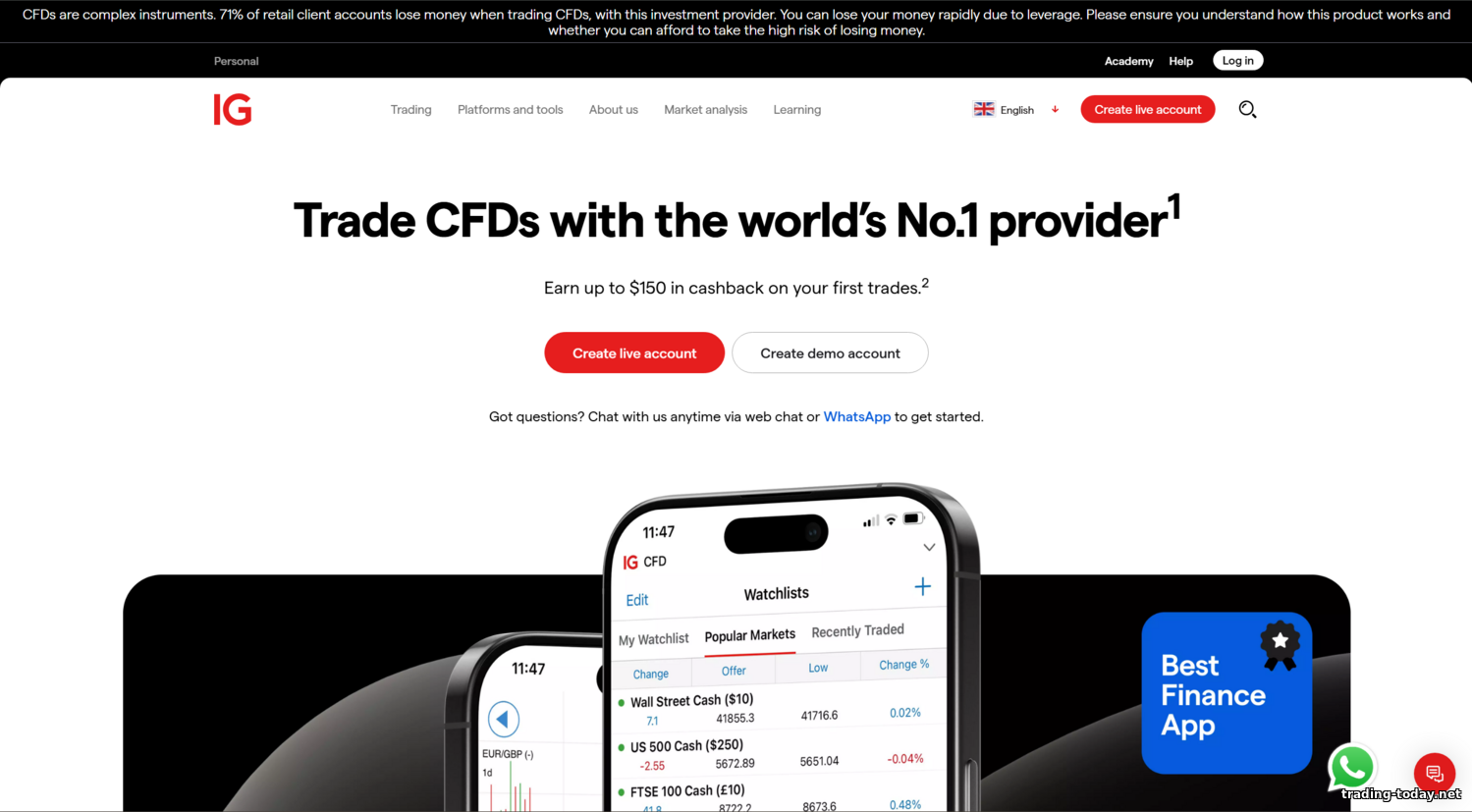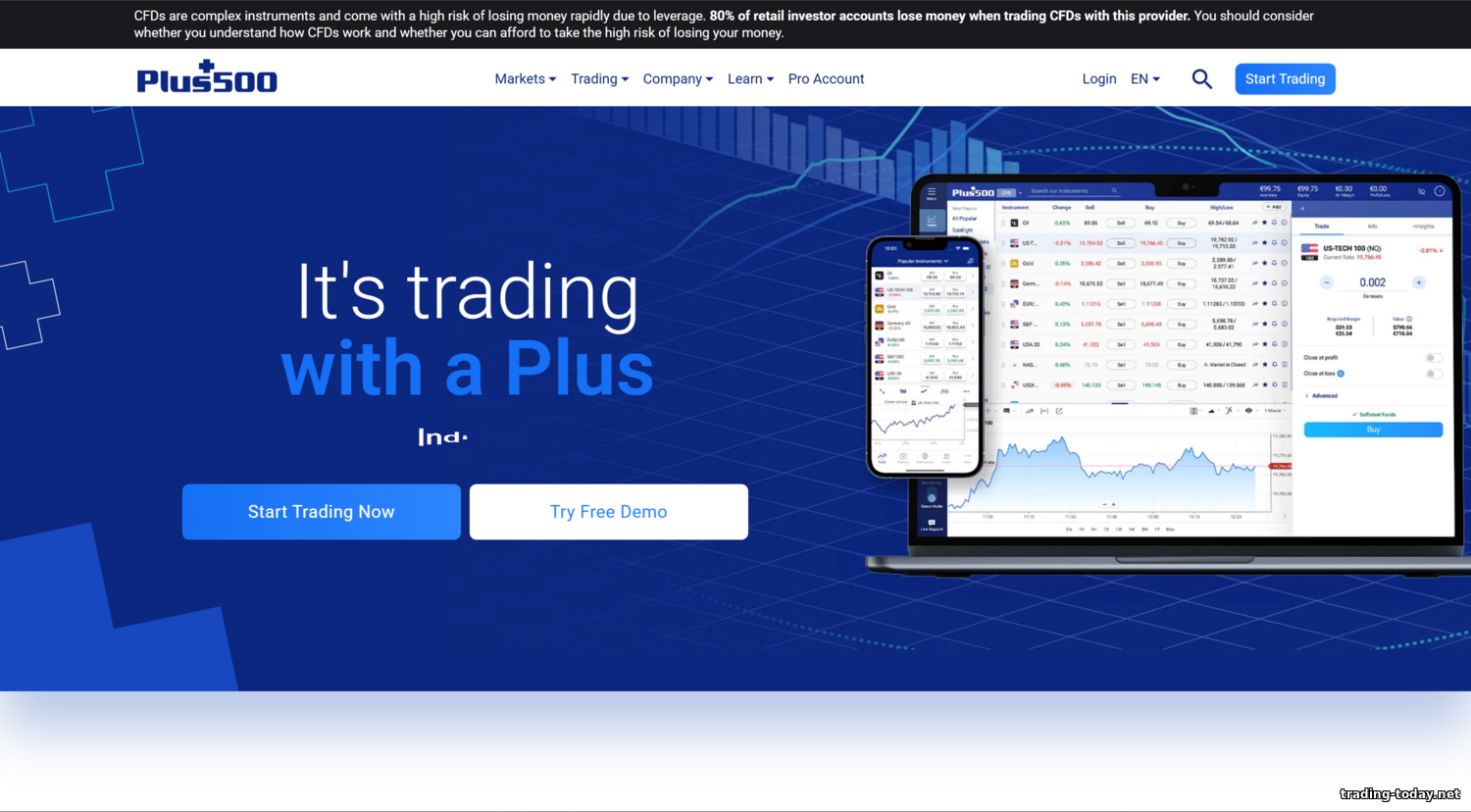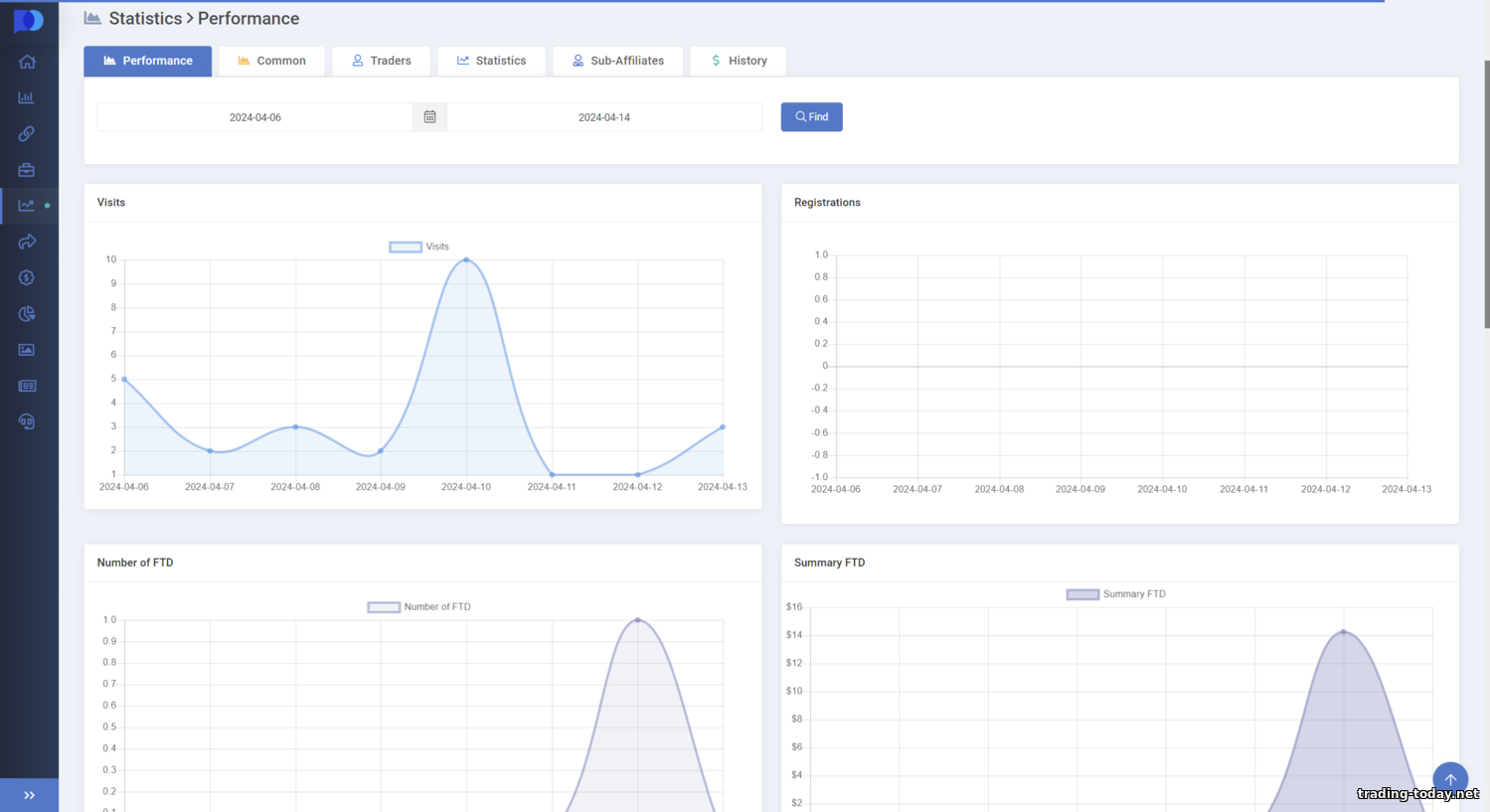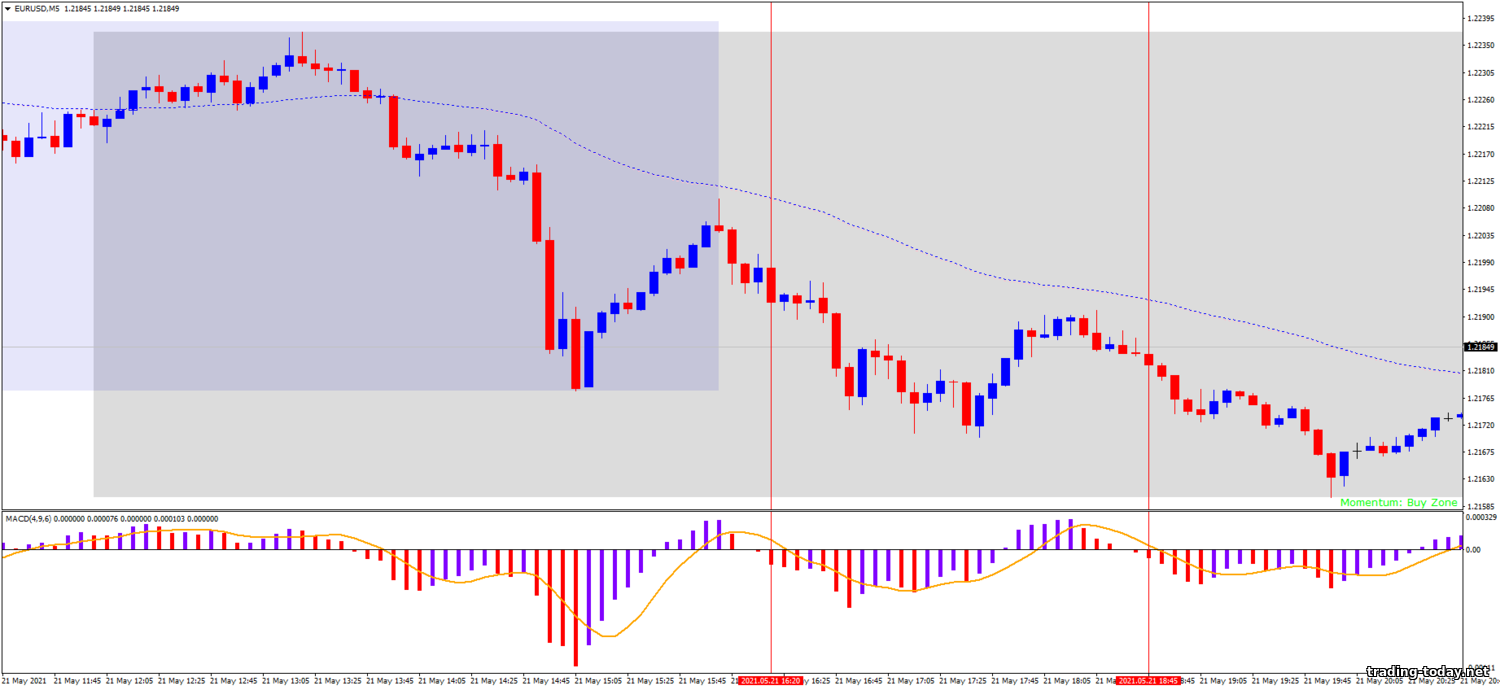Money management in Binary Options trading: rules of Money Management (2025)
What is money management? This is a whole set of strict rules, following which the trader does NOT risk losing his money completely - this is money management.
What difference does it make to how much money you have in your trading account and how much of a deposit you are willing to make if, literally, in a couple of days or hours, there is no money left in your account to make a new trade? Do you think finding a profitable trading strategy will save you? And if not, then what?! If the results are the same all the time, will the deposit be completely drained?
Imagine that you are building a house. First, you lay the foundation, and only then put walls, ceiling, roof on it... So, your trading strategy is not even the roof of your house, but only a weather vane on it, indicating the direction to open a deal. You can do without a weather vane, right? And you can also very quickly replace it with another, more attractive one? Can you do without a foundation? No - without support your house will fall apart very quickly.
It’s exactly the same in trading, only money management plays the role of the foundation. If you learn to manage your capital, then any strategy will bring you profit. I repeat once again - the topic is very important! Without this knowledge, you WILL NOT make money trading Binary Options!
It would seem that what could be difficult about pressing two buttons (Up and Down)? But every experienced trader knows that it is impossible to make money every day and there are unprofitable days, weeks or even months and years. It is at the beginning of this period that many beginners lose their money - they simply do not know what to do in order to avoid a complete loss of money. All novice traders believe that it is possible to find a very profitable trading strategy or trading method that will show results in 90% of profitable trades. Yes, there are such strategies, but they show such results over a very short period of time. If you use such strategies in the long term, then there is no point in talking about 90% of transactions being in the black - profitability will drop to 70% (at best), or even to 60-65%. And this is normal - you can even make money from this.
But all these are small things compared to the inability to manage your capital. For example, let’s assume that you replenished your trading balance by $1000 and began trading with an amount of $250 - it’s not difficult to guess that after 4 losing trades in a row, there will be no money left in your account. A striking example of improper management of your capital and violation of the rules of money management. All this can (and should!) be avoided, and $1000 is an excellent starting amount on your balance, which, over time, will grow into $10,000. Of course, if you become familiar with the rules of money management.
Your most important task is that youlearn to make money where possible, and stop losing money where you can’t make money!Sounds simple, doesn’t it? But when was trade simple?!
Contents
- Money management: the simplest and most important rule for Binary Options
- Money management and risk assessment in binary options trading
- Money management: “three shots and you’re dead!” in trading Binary options
- Money management and calculation of successful transactions in Binary Options trading
- Floating money management in binary options trading
- Violation of money management rules and what this leads to in Binary Options
- Money management and deposit acceleration in Binary Options
- Money management in trading (trading) Binary options
- “Don’t put all your eggs in one basket” or “trade with several brokers”
- Use different tools when trading Binary Options
- Have several profitable trading strategies for Binary Options
- Set goals before trading Binary Options
- Let your profits grow in Binary Options trading
- Always control your losses in Binary Options
- Money management is the head of everything
Money management: the simplest and most important rule for Binary Options
Every successful period is followed by a period of losing money - every successful trader knows about this. At the same time, none of these periods last forever:- The profitable period ends and losing trading sessions begin
- The losing period ends and profitable trading begins
- Your trading strategy is “outdated” and temporarily no longer shows the correct entry points because the market has changed
- You were unable to adapt to the changing market in time - you stopped understanding it correctly
The maximum transaction amount should not exceed 5% of the trading balance
Why exactly 5% of the trade balance? This is a relatively small amount that has a minimal impact on trading psychologyof the trader himself. If you lose (yes, you always need to think about how much you can lose in a trade - there are no 100% forecasts) of an amount of 5% of the trading balance, the trader does not lose self-control, unlike losing an amount of 10% of the trading balance.This 5% is calculated using the following formula:
Maximum transaction amount = trade balance / 100 * 5
For a deposit of $1000, the formula will look like this:Maximum transaction amount = $1000 / 100 * 5 = $50
Very important: 5% is the MAXIMUM TRANSACTION AMOUNT, if finances allow, then it is better to trade with an amount of 1% or even less!The larger your trading deposit, the smaller the amount of your transaction should be - this is necessary for your psychological peace of mind. There is no need to develop fears out of nowhere, besides, psychological deposit barrier no one canceled!
Money management and risk assessment in binary options trading
Money management allows you to manage risks in trading - this is a very important component of profitable trading, as it does not allow the trader to lose a lot. For example, let's take a deposit of $1000. According to the rules of money management, we have the right to trade an amount of no more than 5% of the trading balance. Let's imagine that you have 3 unsuccessful trades in a row:- 1 trade: $1000 - $50 (5% of $1000) = $950
- 2nd deal: $950 - $48 (5% of $950) = $902
- Trade 3: $902 - $45 (5% of $902) = $857
- 1 trade: $1000 - $50 (5% of $1000) = $950
- 2nd transaction: $950 - $50 (5% of $1000) = $900
- 3rd deal: $900 - $50 (5% of $1000) = $850
So, let’s take the same trading balance (deposit) of $1000, but we will trade with an amount of 1% of the balance. With three losing trades, we will get the following results:
- 1 trade: $1000 - $10 (1% of $1000) = $990
- 2nd transaction: $990 - $9 (1% of $990) = $981
- Trade 3: $981 - $9 (1% of $981) = $972
If you trade at a fixed rate of 1% of a trading balance of $1000 (each trade will have an investment amount of $10), then with three losing trades you will have the following results:
- 1 trade: $1000 - $10 (1% of $1000) = $990
- 2nd transaction: $990 - $10 (1% of $1000) = $980
- 3 trade: $980 - $10 (1% of $1000) = $970
If we compare examples where the risk was 5% of the trading balance in each transaction and examples where there was a risk of 1%, we get the following:
- Losses after three trades with a risk of 5%: $143 (or $150, when trading a fixed investment amount)
- Losses after three trades with a risk of 1%: $28 (or $30, when trading a fixed investment amount)
- Profit for risk of 5% of $1000: $35
- Profit for risk of 1% of $1000: $7
Rest assured, making money, even a little, is much better than losing your money at a very fast pace! So if they tell you that trading 1% of your trading balance is better than trading 5%, then YES, it is! The lower the risks for a trader, the greater the chances that he will earn money rather than lose!
It follows that you should not listen to “Guru-bloggers” who instill in you “the true truth of profitable trading”, while violating the rules of risk management!
Money management: “three shots and you’re dead!” in trading Binary options
Did you notice that in every example of losing trades, I always talked about three trades? Do you think it's just like that? But no! There is a very good money management rule that has saved hundreds of deposits from being lost. It sounds like this:Three shots and you're dead!
Of course, in this case we are not talking about shots, but about losing trades during your trading. This rule of money management has existed for a very long time. Traders who are very well versed in trading psychology have long noticed that after three losing trades, the performance of the trading trader drops very significantly. He starts:- Make mistakes in trading forecasts
- Violate the rules of risk and money management
- Win back lost money
- Become depressed and prone to fears
Beginners in trading very often ignore this rule, even if they know about it. The result is quite predictable - a complete loss of the trading deposit. Well, what did you expect if you care so little about the rules of money management? Did you really think that you would become millionaires with this approach to trading? You came here to play, not to earn money, so be prepared to lose! If you want to make money, here are the rules of money management!
What does the “Three shots and you’re dead” rule tell us? The answer is quite simple - after receiving three losing trades in a row, you urgently need to stop trading and do something unrelated to trading. How long does it take to leave the trade? For beginner traders, it is advised to finish trading before the end of the current day, for more experienced traders - for 3-4 hours. This time will be enough to come to terms with losses and start everything from scratch.
For the most part, the rule is "Three shots and you're dead!" limits the trader from emotional stress, which entails unnecessary losses. Experienced traders are able to ignore this rule, but they know how to keep their emotions in check and may stop trading even after a series of losing trades, rather than recoup as newbies would. But these are experienced traders. For you, dear reader, the rule of money management is “Three shots and you’re dead!” - a prerequisite for trading! If you think otherwise, then this is your right - you will pay out of your own pocket! As they say, my job is to warn.
Money management and calculation of successful transactions in binary options trading
You all know that in Binary Options trading, brokers are willing to pay from 65% to 95% of the investment amount for a correct forecast. But we lose 100% of the transaction amount if the forecast turns out to be incorrect. With a little brainstorming, everyone will understand that in order to make a profit, it is necessary to make more than 50% of transactions in the black. The percentage of profitable trades itself is calculated using a very simple formula:Number of profitable trades / total number of trades * 100
Thus, if you made 50 trades, of which 35 were closed in profit, then:35/50*100=70
In this example, you made 70% profitable trades. Of course, your profit or loss directly depends on the payment of the Binary Options broker, and, sometimes, on the ability to close a losing trade early, thereby losing only part of the investment amount, and not 100%.In the table below, I gave examples for different payout percentages from Binary Options brokers, and also gave examples of break-even trading with the condition of early closure of unprofitable trades:
|
Payout percentage from the Binary Options broker |
Percentage of loss for an incorrect forecast |
Break-even percentage |
|
70% |
100% |
58,80% |
|
75% |
100% |
57,10% |
|
80% |
100% |
55,60% |
|
85% |
100% |
54,10% |
|
90% |
100% |
52,60% |
|
70% |
95% |
57,60% |
|
75% |
95% |
55,90% |
|
80% |
95% |
54,30% |
|
85% |
95% |
52,80% |
|
70% |
90% |
56,30% |
|
75% |
90% |
54,50% |
|
80% |
90% |
52,90% |
|
85% |
90% |
51,40% |
|
70% |
85% |
54,80% |
|
75% |
85% |
53,10% |
|
80% |
85% |
51,50% |
|
85% |
85% |
50% |
|
70% |
95% |
57,60% |
|
64% |
80% |
55,60% |
|
55% |
70% |
56% |
|
30% |
50% |
62,50% |
|
90% |
90% |
50% |
|
50% |
50% |
50% |
|
20% |
20% |
50% |
With a payout of 75% for a correct forecast from Binary Options brokers, and a risk of 85% of the transaction amount (we return 15% if a losing trade is closed early), we need to make no less than 53.1% of profitable trades in order not to lose your transactions.
Any percentage that is greater than the breakeven percentage is our net profit from trading. Anything less than the breakeven percentage is our trading loss. If the percentage of our profitable trades is equal to the breakeven percentage, then we trade at 0 - without losses, but also without profits.
This table is relevant for trading a fixed investment amount per trade. For example, we always trade 1% of an amount of $1000 - $10 per trade, and do not change this amount throughout the entire trade, regardless of the results.
Floating money management in binary options trading
Floating money management is a type of fixed money management in binary options trading. The rules here are still the same - trading is carried out in an amount that does not exceed 5% of the trade balance.But, unlike a fixed investment amount, in floating money management a dynamic change in the investment amount is available for each individual transaction or each individual trading session. This approach can have a very positive effect on trading results, both from the psychological side and from the side of earnings and losses. Many experienced traders rely heavily on their intuition in trading (on their experience), so they decide for themselves how much to risk on each individual trade. If they are confident in the correct forecast, they can easily increase the risk in this transaction to 5% of the deposit. If, on the contrary, traders are not sure that the transaction will be profitable, then they will open a transaction with a reduced risk, say, 1% of the deposit.
A similar situation arises when using different trading strategies or trading at different times of the day. So, for one strategy, your own money management can be used, and for trading according to another strategy, but on the same trading account - a different money management. This flexible approach to trading allows you to make more profit where you can, and lose less money where you have doubts.
There is also a capital management system with floating risk - a system of accumulated risks, which shows itself very well in trading, and also increases the trading balance much faster.
Of course, floating money management is only suitable for more experienced traders. For beginners, it is better not to try to “reinvent the wheel” and trade only a fixed investment amount per trade, not exceeding 5% of the deposit.
Violation of money management rules and what this leads to in Binary Options
As I have said before (in this article and others), 95% of traders lose their money trading Binary Options. Most of these traders are newbies who find it very difficult to follow the rules of money management.Even if a beginner trader knows about the rules of risk and money management, then, most often, he simply ignores - “why do I need them? There are easier ways to trade Binary Options!” A novice trader considers such trading methods to include:
- Trading using Martingale
- I trade the entire deposit at once
- Attempts to recover after losing trades
Very often, a novice trader violates the rules of money management without even knowing it. You don’t need to look far for an example - let’s take the minimum deposit from the broker Intrade Bar. It is equal to $10, and the minimum investment amount per transaction is $1.
It’s not difficult to guess if you carefully read this article that there is a direct violation of the rules of money management, namely “The risks in each transaction initially exceed the permissible 5% of the deposit.” Saving your money is not always a good thing!
Each transaction with a minimum deposit will be equal to at least 10% of the balance. It follows that the minimum deposit for a trader should allow him to make at least 20 transactions (5% each transaction) - be at least $20 with brokers where you can invest $1.
It is better if your trading balance allows you to open at least 100 trades. But we talked about this in the article “Deposits in Binary Options", so let’s go back to Let's not do this. We are now interested in something completely different - what will happen to a trader who violates the rules of money management.
Everything is simple here - all trade (from replenishment of the trade balance to its complete loss) takes place according to one of the scenarios:
- If you're lucky, the trader's balance will last a couple of trading sessions, after which it will be drained
- A trader loses everything at once in one trading session
- After a strong drawdown of the deposit, the trader stops trading and drains the balance of the deposit in the next trading session
- A trader, after a couple of successful trading sessions, manages to withdraw the profit, after which he drains the balances on the trading account, replenishes the balance again in the hope of winning back and even loses his previous earnings
After draining a few deposits, at best, you will understand the importance of money management rules in Binary Options trading. If you don’t understand this importance, then you will continue to consistently give your money to Binary Options brokers.
Money management is the ONLY (literally) way that will allow you to save your funds. There is nothing in trading that will allow you to earn consistently, except for the rules of money management - no trading strategies, signals, patterns, tips, or anything else will work if you violate the rules of money management.
If a beginner does not care about the rules of money management, then a professional complies with these rules 100% of the time - this is the difference in the results (one loses money, the other makes money).
Money management and deposit acceleration in Binary Options
We have already talked about deposit acceleration - this is a systematic violation of the rules of money management by increasing the percentage of risk in every transaction. In short - it doesn't work! And if it works, then the chance is one in 1000 – pure luck.It’s clear that deposit acceleration is used by “traders” (newbies), whose trading deposit is only $10-100, but they want a 4-digit amount in their account and no less! In most cases, these traders are victims of Bloggers who “teach” how to make “billions with $10.” Well, what you fell for, this is the result, the money is yours after all. The problem lies elsewhere. Have you ever tried doing the same thing every day? Not only is high-level memory developed, but the brain also gets used to the same actions - people who quit smoking begin to eat something very often. They need to spend the time freed up from smoking in some similar way. This habit of doing the same thing can have a very negative impact on a trader who likes to “spread his deposits.”
The motive of such traders is clear - a rapid increase in the amount in the trading account (from $10 to $200 in just a day, for example). Having achieved such results, the trader has two thoughts:
- You need to start trading according to the rules of money management - this is the most correct approach, besides, now the trade balance allows
- Yes, but this is trading a measly 1-5% of the balance - the result will be very slow. Besides, I have already demonstrated my ability to accelerate the deposit, why not continue?!
With the “acceleration of deposits”, you yourself will not notice when you find yourself in the trap of a stable drain of money. On the one hand, you will understand that the rules of money management were invented for a reason - they are needed for profitable trading. On the other hand, you will be strangled by a toad, forcing you to trade steadily, ignoring all the acceptable rules of money management. You simply cannot refuse such trading (from accelerating deposits) because... Because it’s easier!
It’s easier to think about how you can earn some traders’ monthly earnings in one trading session. It's easier to "trade" (actually, play). The problem is that it is practically impossible to make money using this method - any positive result is pure luck, and luck, as you know, can end.
“Deposit acceleration” was invented by brokers for fools. Choose your own path - be a fool and always try to increase your deposit, or initially try to follow the rules of money management and gradually hone your profitable trading skills.
Money management in trading (trading) Binary options
There are a number of very important rules and tips for managing your capital (money management rules), which will minimize all risks in trading Binary Options. We will now talk about these rules and tips.“Don’t put all your eggs in one basket” or “trade with several brokers”
“Don't put all your eggs in one basket! If you drop it, you’ll break everything!” - Likewise, you should not trade with only one broker. If finances allow, be sure to keep your money with several brokers. This is necessary not only for the safety of saving your funds, but you will also need it very much at times when any broker is not available for trading. For example, during an update of the trading platform or any other technical work or technical failures.Of course, all deposits must be calculated in advance and must not violate the rules of money management. Don't know which brokers you should trade with? You will find the answer to your question in the article “How to choose a binary options broker".
Use different tools in Binary Options trading
Any experienced trader is able to trade using different methods and use completely different services (or charts) to analyze price movements. There is a misconception that every professional trader should know only one trading method 200%. If this were the case, then all professional traders would end their careers very quickly because the market is volatile.Those who can adapt make money! So knowing several trading techniques or several ways to manage your capital is a huge plus. Of course, with this approach you won’t be able to study something 100%, but, in most cases, you won’t need it - you can already earn money consistently from trading Binary Options.
Have several profitable trading strategies for Binary Options
Because the market is volatile, different trading strategies may work when other strategies will not. Therefore, it is very important to have several trading strategies “for every taste”:- For trend trading
- For trading against the trend
- For news trading
- For sideways trading (flat)
Set goals before trading Binary Options
Many traders start trading and do not know when to stop - when there is no loss limit and no profit limit, trading is carried out until the trader:- Won't get tired and won't stop trading
- Will not lose your trading deposit
Let your profits grow in Binary Options trading
Literally - if trading goes well, then this is a reason to reach the established profit limit. Of course, it’s not worth overtrading. And it’s also better not to break the rules of money management.Slowly, without risks, but confidently you earn your daily profit and that’s it – you go to rest. It seemed that this rule could be broken? But there is something - many traders, having made three to five profitable transactions in a row, simply stop trading. On the one hand, this is a good solution, because... they secured their profits. On the other hand, they simply cut off their profits where the market allows them to get it (and this does not always happen). Therefore, it is very important to earn the maximum where trading is very easy - it definitely won’t be superfluous.
Always control your losses in Binary Options
The rule that works best is “Three shots and you’re dead!” If for some reason you cannot follow this rule, then still always monitor the risks that you invest in trading. Once again: the risk in each transaction should not exceed 5% of the trading balance! No Martingale methods or acceleration of deposits work in trading. The trader’s emotional dependence on the amount in the trading account is very high. If you lose a very large amount, you won’t even have time to blink an eye, and your account balance will already be drained. This is a very uncontrollable process even for professionals, so if you are new to trading, don't even think about breaking the rules of money management!Money management is the head of everything
Money management is one of the three pillars of profitable trading. Also very important: trading discipline and trading psychology. This is the foundation of your home!Having studied money management, you will not only stop losing your money, but also learn how to earn a lot and consistently. Do not think that after reading this article, you will immediately become a professional in managing your money - this definitely will not happen!
Practice and only practice is the key to your success. On the other hand, the sooner you begin to accustom yourself to the rules of money management, the faster you will get used to them and the less money you will lose. This is certainly difficult, but there’s no way around it!
Having laid the foundation for profitable trading, you can “screw” whatever your heart desires onto it: any trading strategies, trading techniques, various methods of market analysis. There is a professional in managing his capital who does not need knowledge of economic news and knowledge in technical analysis - he makes a forecast by tossing a coin (the case was described in one of the books about trading) and still makes stable money.
Using the rules of money management, any trading method will bring you profit. At the same time, without knowledge or without using the rules of money management, you will lose money even when using the most profitable trading techniques.



















Reviews and comments